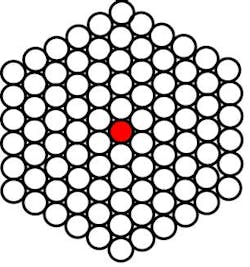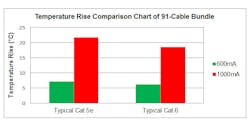High-power PoE considerations: What you need to know
Testing heat rise In order to provide guidelines for 802.3at standards, TIA had previously developed a method of testing heat rise comparison performance in current-carrying category cables for the initial release of TIA TSB 184:2009.
There are real benefits to using specially designed PoE cabling with properties such as larger, lower-gauge conductors and higher temperature cable ratings for the majority of PoE applications. Aside from having confidence that the cable will withstand higher temperature operations and generate lower temperatures, energy savings and efficiency are also considerations when deploying a large scale PoE infrastructure.
General Cable’s EfficienC Max line of products are specifically designed to mitigate and withstand the harsh conditions brought to cabling infrastructure by high powered PoE while providing energy savings.
ROY KUSUMA is Lead Product Engineer-Communications Products at General Cable. MATT GENTILE is Product Manager-Datacom Products at General Cable.
This article was originally published at Communications Supply Corporation's "The CSC Blog."
Roy Kusuma teamed up with Panduit's Ron Tellas to present information on this topic in a webcast seminar titled "Delivering Tomorrow's Power over Ethernet with Today's Cabling and Connectivity." You can view the seminar here.



